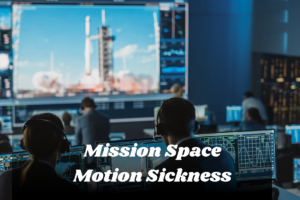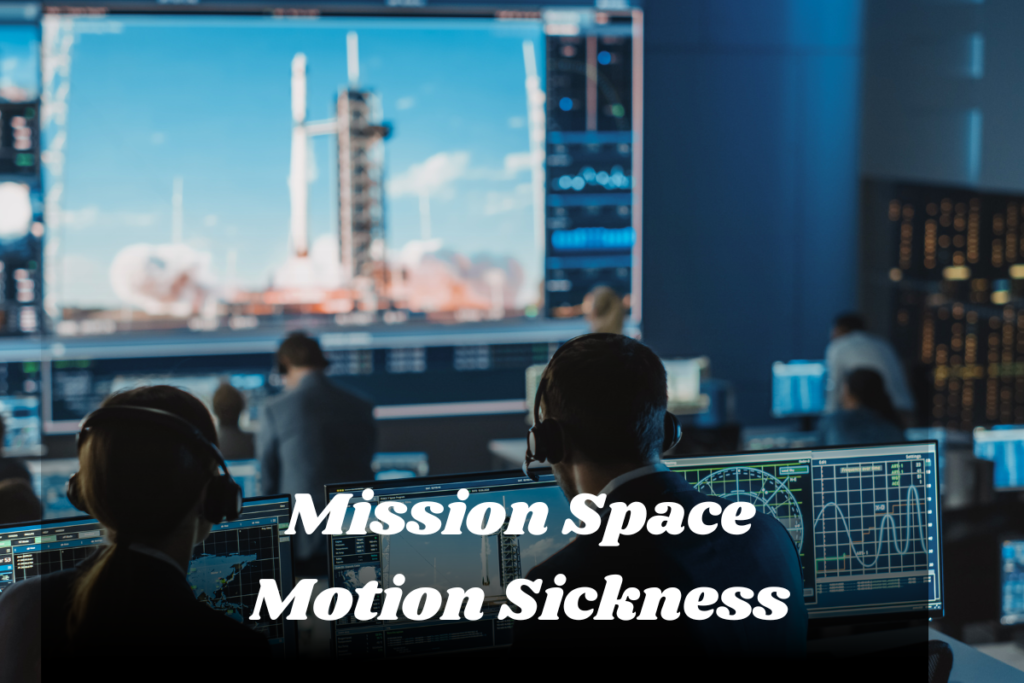Introduction
Space travel is an extraordinary achievement, but it comes with its own set of challenges—one of which is motion sickness. For astronauts, experiencing nausea and dizziness in space can significantly impact their performance and well-being. Understanding mission space motion sickness is crucial for ensuring successful space missions and maintaining astronaut health.
What is Mission Space Motion Sickness?
Mission space motion sickness, often referred to as space adaptation syndrome, occurs when astronauts experience nausea, dizziness, and other symptoms due to the unique environment of space. Unlike motion sickness on Earth, which is caused by traditional movement conflicts, space motion sickness results from the absence of gravity and the resulting sensory disorientation.
Causes of Space Motion Sickness
In space, the vestibular system—the part of the inner ear responsible for balance—is disrupted due to the lack of gravity. This disruption leads to sensory conflicts, as the body struggles to adapt to the new environment. Additionally, fluid distribution changes in the body can exacerbate these symptoms.
Symptoms of Space Motion Sickness
Astronauts may experience a range of symptoms, including nausea, vomiting, headaches, and dizziness. These symptoms can be more severe than those experienced on Earth, partly because the body is adjusting to an entirely new set of sensory inputs.
The Impact of Space Motion Sickness on Astronauts
Space motion sickness can affect an astronaut’s ability to perform tasks, making it a significant concern for mission success. The discomfort can also have psychological effects, leading to increased stress and decreased morale among crew members.
Historical Cases of Space Motion Sickness
Early space missions revealed much about space motion sickness, as astronauts frequently reported symptoms. Over time, understanding and management strategies have evolved, improving the ability to handle these issues effectively.
Preventive Measures for Space Motion Sickness
Preventing space motion sickness involves several strategies. Astronauts undergo extensive pre-mission training to help them acclimate to space conditions. Additionally, medications and dietary adjustments can help mitigate symptoms. Anti-nausea devices are also used to provide relief during missions.
Managing Space Motion Sickness During a Mission
During a mission, astronauts use various techniques to manage space motion sickness. This includes adhering to prescribed medication regimens, following dietary guidelines, and employing relaxation techniques. Crew support and medical oversight are also crucial in managing symptoms effectively.
Technological Advances in Managing Space Motion Sickness
Technological advancements are continually improving the management of space motion sickness. Innovations in virtual reality can help astronauts acclimate to space conditions, while new medications and treatments offer better symptom relief.
The Role of Research in Understanding Space Motion Sickness
Ongoing research plays a vital role in understanding and managing space motion sickness. Studies focus on the physiological and psychological aspects of the condition, leading to new strategies and technologies to improve astronaut health.
Case Studies: Successful Management of Space Motion Sickness
Several missions have demonstrated effective management of space motion sickness. By analyzing these case studies, researchers and space agencies have gained valuable insights into what works and what can be improved.
Training Programs for Future Astronauts
Current training programs are designed to help future astronauts adapt to the unique conditions of space. These programs include simulations, physical conditioning, and education on how to manage and prevent space motion sickness.
#AICarAccidentLawyer #AIBarrels #AICondolenceMessages #AddObjectOnImageWithAi
The Psychological Aspect of Space Motion Sickness
The psychological impact of space motion sickness is an important consideration. Astronauts may experience increased stress and anxiety due to their symptoms, which can affect their overall performance. Support systems and coping strategies are essential for maintaining mental health.

Space Travel and Future Challenges
As space travel advances, managing space motion sickness will remain a critical challenge. Future missions, especially those involving longer durations, will require ongoing improvements in prevention and treatment strategies.
Conclusion
Mission space motion sickness is a complex issue with significant implications for space travel. By understanding its causes, symptoms, and management strategies, we can better prepare astronauts for successful missions and ensure their well-being. Continued research and technological advancements are essential for addressing this challenge effectively.
FAQs
- What are the primary causes of motion sickness in space?
Space motion sickness is primarily caused by the disruption of the vestibular system and sensory conflicts due to the lack of gravity. - How do symptoms of space motion sickness differ from traditional motion sickness?
Space motion sickness symptoms can be more severe and persistent, with astronauts experiencing intense nausea, dizziness, and headaches that are exacerbated by the unique conditions of space. - What preventive measures can astronauts take to avoid space motion sickness?
Preventive measures include pre-mission training, medications, dietary adjustments, and the use of anti-nausea devices. - How has technology improved the management of space motion sickness?
Technological advances such as virtual reality, new medications, and innovative treatments have significantly improved the management of space motion sickness. - What are the future directions for research on space motion sickness?
Future research will focus on better understanding the physiological and psychological aspects of space motion sickness, developing new technologies, and improving training and prevention strategies.


